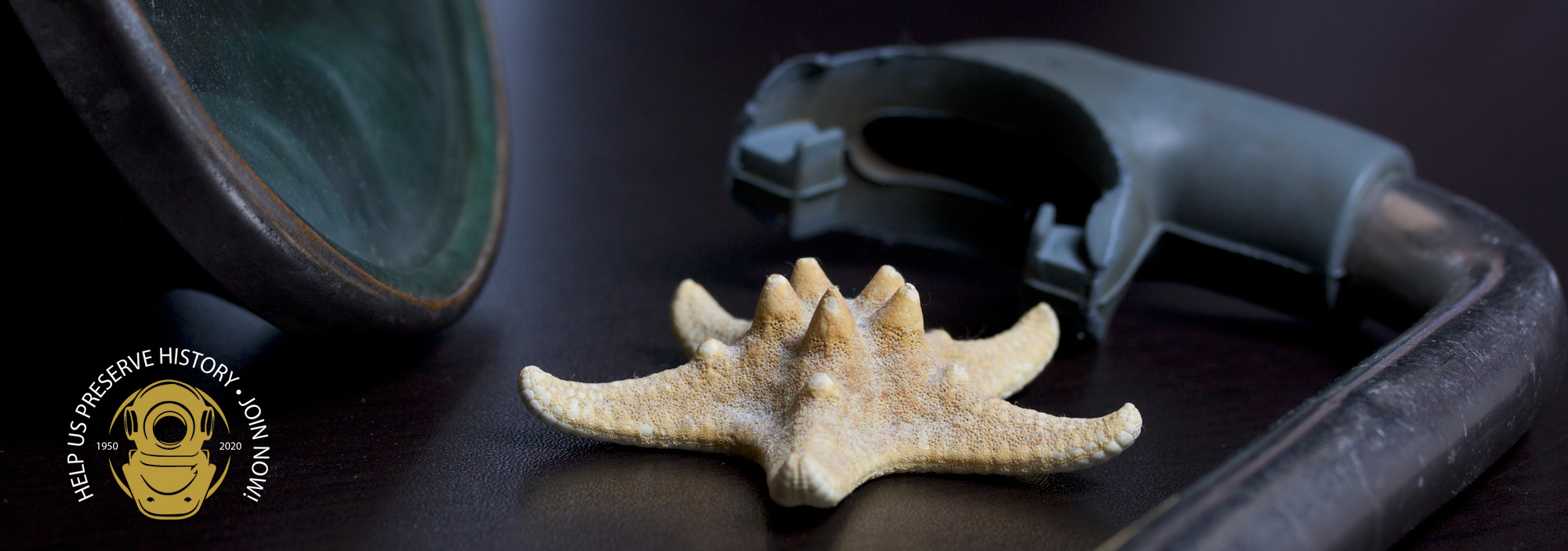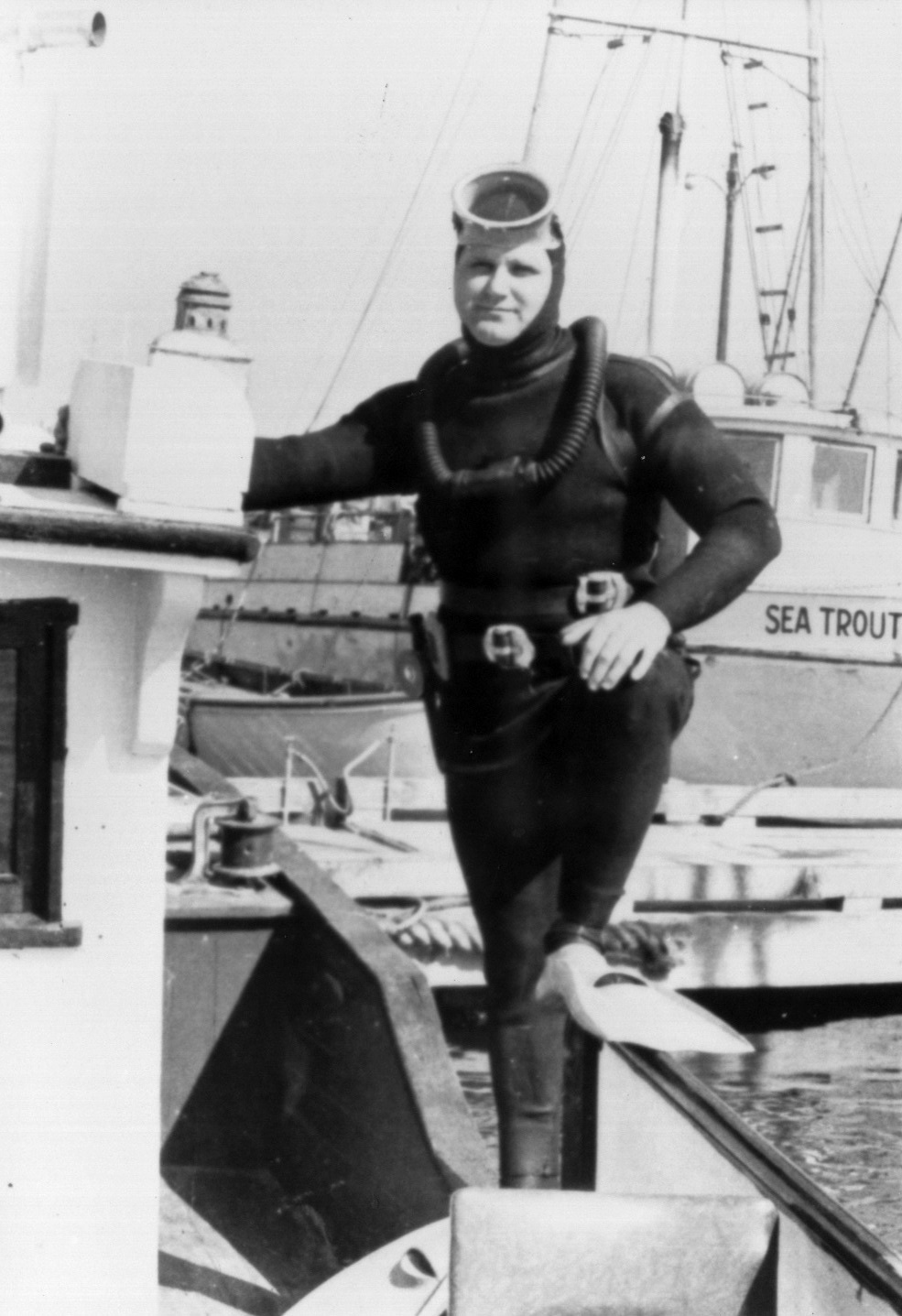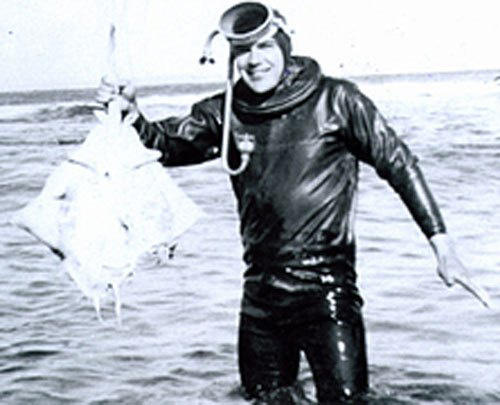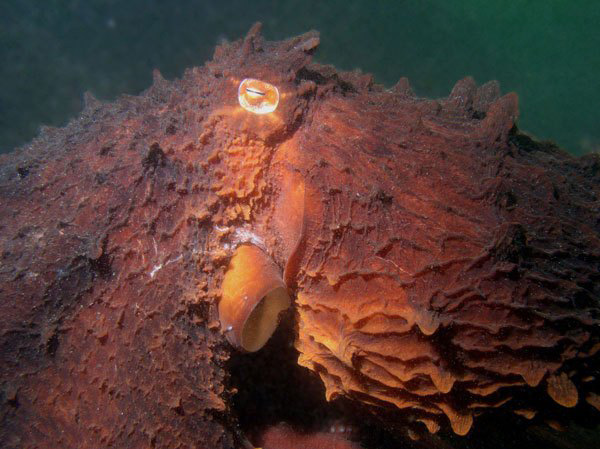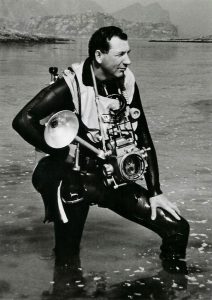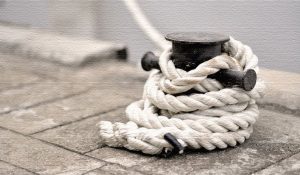Dick took diving class at Portland State University in 1973–74 from Garland Trzynka, who was his swim coach from a few years before. Dick was coaching the PSU springboard diving team and one of his students needed a buddy to take a Scuba diving class, so he signed up.
Dick says, “training in the pool was fun and the open water dives were held up at Edmonds. I remember getting all my gear on and then snorkeling out to the wreck. When the instructor told us to put our regulators in our mouth and start descending, I thought to myself, “I hope this stuff works”. As I went down below the surface I felt like I was going into a different world – sort of like slipping from consciousness to sub consciousness. The dive was peaceful, eye opening and weirdly thrilling at the same time. I was instantly hooked. When I got back to shore, I walked right up to the instructor and said, “that was fun, how do I become an instructor?”
His next step was to help out with a PADI instructor named Bill Petty. He assisted Bill for a few classes and a few open water weekends. Then Dick took a job in Vancouver, Washington at The Green Meadows Country Club. That’s where Dick and I met when I walked in and asked if I could use the pool for scuba lessons. That was 1975 and we’ve been friends since.
I coached Dick and he assisted me for a few months, and then I took him to Port Townsend to attend a NAUI Instructor Training course, 9 days of intense training and testing. Dick was an experienced teacher, a water person, a great diver and he did great at the course. We worked together at my dive store in Vancouver, WA from 1975-1983. One of our highlight experiences came when Dick returned from his trip to the Red Sea where he had learned to windsurf. I had just made arrangements with a couple of suppliers and a rep to bring in sailboards, sails and accessories, but what I needed was an instructor. I got my staff together and asked if anyone knew anything about windsurfing and Dick said that he had taken lessons on his trip to the Red Sea. I said “great – now you are our instructor.”
I have fond memories of my first windsurfing adventure with Dick to Vancouver Lake. It took us about 10 minutes to sail across the lake. The wind was perfect. Then it took us two hours to paddle back because we forgot to learn how to tack back and fourth against the wind. Later Dick finally figured it out and I went back to diving. We’ve had other adventures together, but I save those for another time.
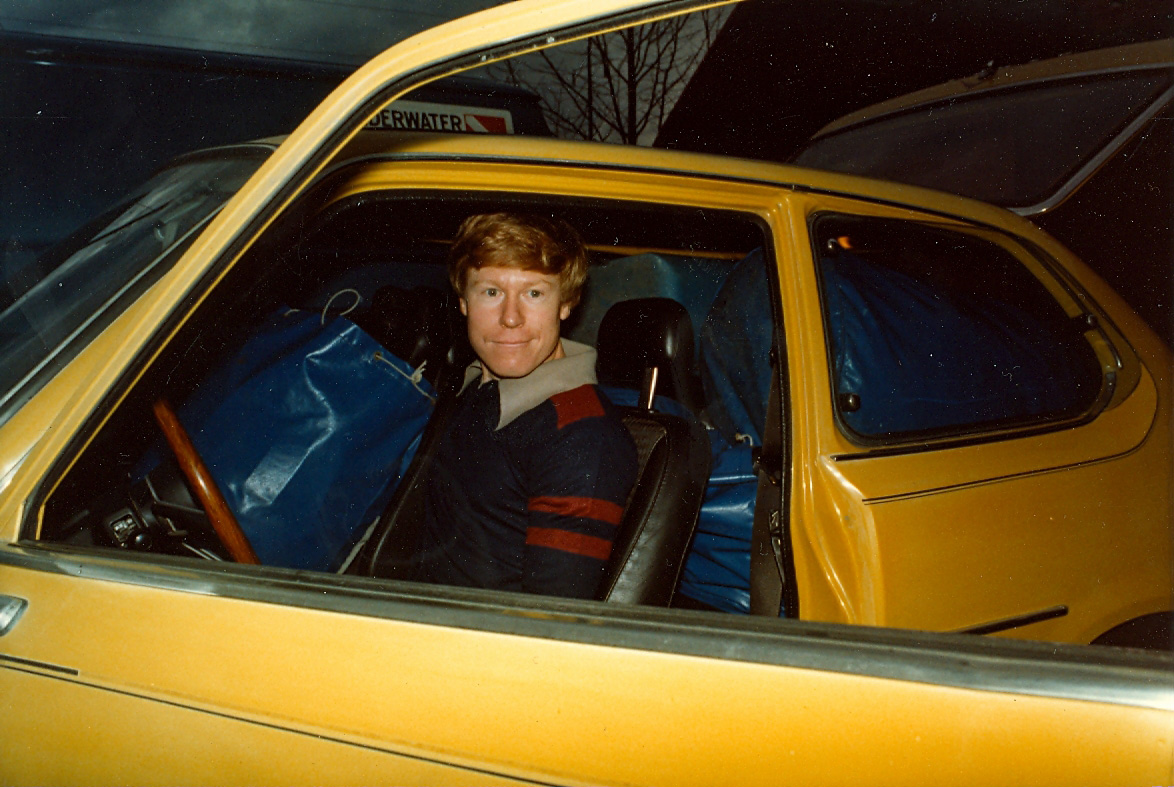
Dick’s Adventures and Sea Stories:
My diving highlights include the trip we took to Port Hardy, a 2 week vacation to the Red Sea where I happened to learn to windsurf, a one week trip to Palau for Penny’s (Dick’s wife) ex-husband’s wedding, 10 days on a 100’ sail boat in Fiji, the Cayman islands trip with Tom, and the best diving ever in the Maldive Islands. When I got to the Maldives, the dive guide there said that my first dive would have to be inside the reef because the previous few days had been stormy, and the water was churned up. The guide told me not to expect too much from the first dive because the really good stuff was outside the reef. So, almost reluctantly, I went along for a 40’ dive around a small cone shaped reef inside the main reef. It was the most spectacular dive I had ever had! Amazing coral colors and more varieties of fish than I had seen in all my other tropical dives put together. The next day we went outside the reef and true to the guide’s word, the diving was even better. Much better! It included a school of blue fish about 10 – 12 inches long that swam by me for something like 5 whole minutes and a seemingly domesticated Manta Ray that had a wing span of about 20 feet. And that’s no shit!”
Always Dive with a Buddy
Charley was one of my scuba students back in the 70’s. He really enjoyed diving and soon bought a 26 foot sailboat and invited me to spend a couple weeks with him exploring the San Juan Islands. He expected that we would catch a lot of sea food as I had told him of my many previous trips to the San Juan’s where I had brought home a big ice chest full of fish, crab, abalone, and shrimp. Accordingly, the only provisions he took along on the boat seemed to be butter, lemons and bread crumbs. So, off we went to Anacortes, launched the boat and headed out on our memorable vacation.
After a couple of days meandering around the islands, we ended up at Matia Island just north of Orcas. Charley had hurt his back the previous day and wanted to rest for a few days before getting back in the water. We were running out of sea food and he asked me if I minded diving solo since he didn’t want to skip any meals. Neither did I, so down I went on the south side of the island to a spot that I knew to be a fairly reliable place to find Ling cod.
Down around 50 feet or so, I saw a medium sized Ling and was able to spear it. I hooked it to the stringer on my belt and went off to find something for Charley. Only moments later another Ling appeared and again I was successful in shooting it and stringing it on my belt. I continued along and soon noticed a shark swimming by. It was a small one, about 3 feet. I paid it little mind and before long managed to procure a small rock fish and again attached it to my stringer. When I looked up I saw 3 more sharks ranging from 2 to 5 feet in length. I was a little startled but kept on way. After a short swim there appeared to be several more shark following behind me. Some of them looked pretty big. Now it was time to take some precautionary measures. I headed back to my starting point, ascended up to the boat and gave Charley my catch of fish. I told him about the sharks and that I was sure they were following me because they smelled the blood from the fish that were on my stringer. Then I made my first mistake. I told him the fishing was so good I was going back down to stock up on a few more Lings.
It wasn’t long before I spotted a good-sized Ling, shot it and put on my stringer, After a few more minutes of hunting I looked around and was shocked to see about 20 – 30 sharks. It didn’t take long for them to smell the fish I had just speared, and the word obviously had spread rapidly among them. I had been diving in San Juan’s for many years and had never encountered more than 1 or 2 sharks. I guess this was my lucky day.
It was time to head back along the bottom toward the boat. On the way back, I made the difficult but wise decision to jettison the Ling from my belt and remove the incentive that was causing the sharks to follow me. No dice. It only took a few minutes before a whole school of sharks appeared whose numbers had increased now to what seemed to be hundreds. They must have somehow sensed that it was I who was going to provide their next meal – one way or another. Ironically, I was beginning to feel a little like a fish in a barrel.
When I reached the spot that I figured was just below Charley and the sailboat, I started what I knew would be a scary ascent. As long as I was on the bottom, I could look up, see them and hopefully fend off any attackers with my spear gun. As I started up, the sharks quickly surrounded me, and I watched helplessly as they menacingly circled around me. Okay, now I admitted to being a little frightened. I had heard somewhere that sharks have a “tell“ when they’re about to attack. They lower their pectoral fins and dart in and out at their intended prey, the exact behavior I was witnessing. I told myself just what I had told numerous students in the past. “When there are sharks around (I never imagined there would be so many or that it would be me in this dire situation) stay calm, don’t make any sudden movements and as a last resort, take your knife out, stab your buddy in the leg and swim to safety.” But I didn’t have a buddy. Where was Charley when I needed him? He was safely sitting up in the boat, probably day dreaming about the fish he was going to have for lunch while I was down 50′ feet below with a million sharks (O.K. maybe only a few hundred – this is a fish story after all) dreaming about what they were going to have for lunch. And they sure did look hungry.
There I was, vicious sharks all around, above and below me, trying my best to not to panic and barely succeeding. Using only my buoyancy compensator, I kept my ascent rate very slow, trying to move as little as possible – although at this point I don’t think there was much I could do to avoid an attack if any of those man-eaters decided it was lunch time. The ascent seemed to take forever but, in reality, it was only about a minute. During that time, my anxiety level rose to high red alert as I watched this gray mass of predators swooping around with evil malice in their eyes, moving in closer and closer. Cue the theme song from Jaws.
Finally, I surfaced and what I had thought would be a relief, instantly became a nightmare. Charley and the sailboat were gone! I quickly swirled around scanning the horizon and saw the boat off in the distance. I screamed “Charley” as loud as I could but at that distance he couldn’t hear me. I watched in horror as I noticed him at the back of the boat, pulling repeatedly at the motor’s starter cord. The motor wasn’t starting and there wasn’t a wisp of wind.
Sure, I was scared during my ascent, surrounded by blood thirsty sharks, but the moment my head was above water, my fear grew exponentially. Scary as it was underwater, watching the sharks darting all around me, as soon as I hit the surface, I had no idea what was happening down below. I could no longer see what the sharks were doing except for the dorsal fins on the surface that kept zeroing in on me only to dart away at the last second. Everything from my neck down was vulnerable and not being able to see what was down there made it ten times worse. “Scared shitless” doesn’t even come close to what I was experiencing.
An eternity passed while I floated on the surface imagining what it would be like being eaten by a shark. Yikes! Another eternity and I heard the motor start. Hallelujah. With a little luck Charley might get to me before the sharks did. But as the boat finally came along side me, here came the biggest dorsal fin I ever saw (close up that is) coming right at me and slowly sinking as it closed in. “Double and triple yikes.” Then it happened. I felt the bump on the side of my thigh. You know, when the shark jaws sever your leg, but the adrenaline is so strong that you don’t feel it until later.
I grabbed on to boat’s ladder, and as far as I can remember, flung myself over the gunwale in one gigantic leap and landed on my back, on the deck, eyes closed. “Charley”, I yelled frantically, “Do I still have both my legs?” “Yeah, why?” he replied
I didn’t die from a shark bite as you might have guess, but the fear from the most frightening experience of my life almost killed me.
Epilogue:
As I lay there on the deck thanking the lord for my exceedingly narrow escape, I asked Charley, “What the hell were you doing so far away from the drop off point?”
“Well, you dropped off your load of fish from your first dive and pretty soon I noticed a bunch of sharks around the boat. I figured they smelled the blood from the fishes you shot dripping out the scuppers into the water. So, I drove around trying to lead them away when this huge sucker swam right up to the back of the boat and took a big bite out of the prop which of course killed the engine.”

